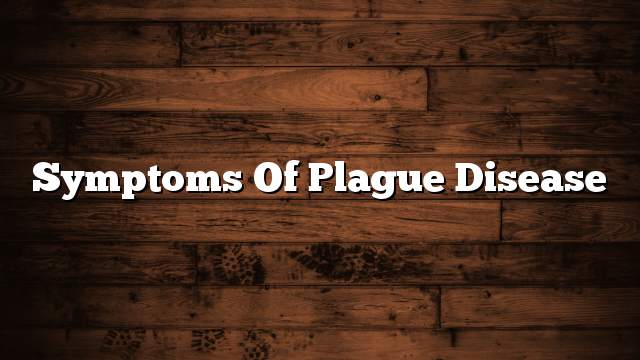the plague
Plague is a disease caused by typhoid Yersenia bacteria. The disease is transmitted from animals carrying these bacteria such as mice, cats, dogs and flies. It is divided into three types: the most common and most common plague plague that affects the lymph nodes, the least widespread and most deadly pulmonary plague, and both types lead to the third type, which is poisonous plague occurs when the spread of bacteria in the blood.
The disease can be prevented by avoiding the animals carrying these bacteria, and if anyone has to turn to the doctor and rely on antibiotics.
Types of plague disease and its symptoms
The symptoms range from mild to severe, and symptoms depend on the type of plague.
Plague plague
- Is the most common species
- Accounting for 80-90% of cases
- It is known by swelling in the lymph nodes near the fly area where the diameter is between 1-10 cm
- The patient suffers from severe pain in the lymph nodes.
- The most common area where this type occurs is the inguinal area, and then the neck and armpit.
- The patient also suffers from heat and shiver in the body.
- The patient suffers from general weakness in the body, and pain in the head.
- The location of the fly disk and the itchy area can be seen by examining the skin.
- This disease can lead to extensive clotting of the vessels, leading to the spread of skin grains throughout the body, which is called black plague or black death.
- If the plague is not treated, 50% of the people die within two to four days.
Poisonous plague
- Is the second type of proliferation
- Is done by having symptoms of poisoning in the blood,
- The patient suffers from fever, shiver, general weakness and deterioration in his health.
- The patient’s pressure drops abruptly, and the number of heart beats increases
- The probability of death of this type of patient is very high because of failure in many organs of the body.
Pulmonary plague
- It is the least common but most deadly species.
- It occurs through the transmission of bacteria in the blood to the respiratory tract or through the transmission of infection by breathing from a person infected with the plague.
- The patient suffers from severe pneumonia, high body temperature, accompanied by difficulty breathing with a cough accompanied by blood.
- The patient suffers from tonsillitis, inflammation of the digestive system.
- The patient can suffer if he is not fully treated with inflammation of the brain membranes, tonsillitis, gastrointestinal inflammation, or inflammation of the brain membranes
